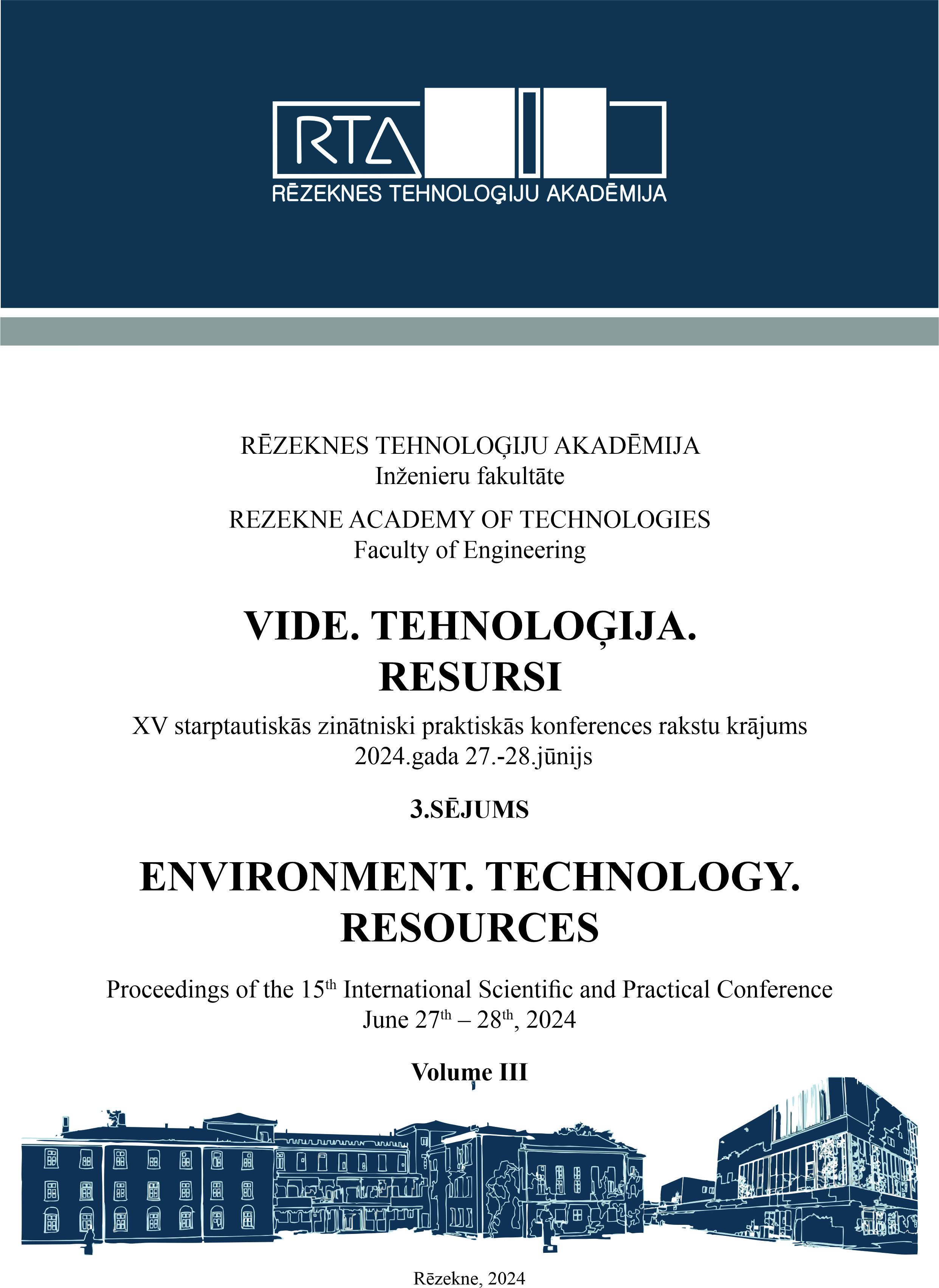NON-LINEAR MODEL IN REGION OF VERY LOW SPEEDS FOR A PERMANENT MAGNET DIRECT CURRENT MOTOR
DOI:
https://doi.org/10.17770/etr2024vol3.8152Keywords:
Mechatronics, Mobile robot, PMDC motor, Non-linear modelling, Tribology aspects, Torque at low rotor speedAbstract
Thematic is in mechatronics and automation branches, applicable in the mobile robotics. Permanent Magnet DC collector motors, are widely used in small mobile robots due to their low-cost. Automated control systems of mobile robots, which operate under different conditions and require accuracy of operation, raise the need for the nonlinearities to be taken into account. In this article, a complex non-linear model of a PMDC motor with brushes is synthesized. The aim is to determine of suitable way of motor behaviour simulating in the region of very small speeds. The tribology aspects at different friction regimes are of great importance for a model at low speeds. The parameters and constants of the model are separately defined through referring to their physical equivalents. Besides the theoretical modelling, a simple mathematical way to determine the constants for this detailed model is deduced. Then the synthesized model is simulated and results are graphically represented and then compared with another similar model, proposed by another authors. As a conclusion, the advantages of this non-linear approach are revealed. This research is applicable as a study of direct-current motor and its simulation model or as facilitating example in lectures of robotics or control systems.
References
A. Bittencourt, E. Wernholt, S. Tavallaey and T. Brogardh, "An extended friction model to capture load and temperature effects in robot joints", Proceedings of the RSJ International Conference on Intelligent Robots and Systems, IEEE (2010), pp.6161-6167, DOI: 10.1109/IROS.2010.5650358
G. Rill, T. Schaeffer, M. Schuderer, "LuGre or not LuGre", Multibody System Dynamics (2023), pp.191–218, DOI: 10.1007/s11044-023-09909-5
A. Keck, J. Zimmermann, O. Sawodny, "Friction parameter identification and compensation using the ElastoPlastic friction model", Mechatronics, Vol.47 (2017), pp.168-182, ISSN 0957-4158, DOI: 10.1016/j.mechatronics.2017.02.009 [Online] Available: https://www.sciencedirect.com/science/article/pii/S0957415817300193
Y. Lu, J. Zhang, S. Yang, Z. Li, "Study on improvement of LuGre dynamical model and its application in vehicle handling dynamics", Journal of Mechanical Science and Technology, no.33 (2019), pp.545–558, DOI: 10.1007/s12206-019-0108-5
B. Bona, M. Indri, N. Smaldone, "Rapid Prototyping of a Model-Based Control With Friction Compensation for a Direct-Drive Robot", ASME Transactions on Mechatronics, vol.11, no.5 (2006), pp.576-584, DOI: 10.1109/TMECH.2006.882989
G. Ferretti, G. Magnani, P. Rocco, "Single and multistate integral friction models", IEEE Transactions on Automatic Control, vol.49, no.12, IEEE (2004), pp.2292-2297, DOI: 10.1109/TAC.2004.839234
J. Swevers, F. Al-Bender, C. Ganseman, T. Prajogo, "An Integrated Friction Model Structure with Improved Presliding Behavior for Accurate Friction Compensation", IEEE Transactions on Automatic Control, vol.45, no.4 (2000), pp.675-686, DOI: 10.1109/9.847103
R. Kelly, J. Llamas, R. Campa, "A measurement procedure for viscous and Coulomb friction", IEEE Transactions on Instrumentation and Measurement, vol.49 (2000), pp.857–861, DOI: 10.1109/19.863938
H. Olsson, K. Åström, C. Canudas de Wit, M. Gäfvert, P. Lischinsky, "Friction Models and Friction Compensation", European Journal of Control, vol.4, iss.3 (1998), pp.176-195, ISSN: 0947-3580, DOI: 10.1016/S0947-3580(98)70113-X
P. Dupont, B. Armstrong, V. Hayward, "Elasto-plastic friction model: Contact compliance and stiction", Proceedings of the American Control Conference, vol.2 (2000), pp.1072-1077, DOI: 10.1109/ACC.2000.876665
T. Kara, I. Eker, "Nonlinear modelling and identification of a DC motor for bidirectional operation with real time experiments", Energy Conversion and Management, vol.45 (2004), pp.1087-1106, DOI: 10.1016/j.enconman.2003.08.005
I. Virgala, P. Frankovský, M. Kenderová, "Friction effect analysis of a DC motor", American Journal of Mechanical Engineering, vol.1 , no.1 (2013), pp.1–5, DOI: 10.12691/ajme-1-1-1 [Online] Available: http://pubs.sciepub.com/ajme/1/1/1
A. Sologubov, I. Kirpichnikova, "Approach to Accounting of Non-Linear Properties By Example of Electric Drive with DC Motor Controlled Type Inverter H-Bridge", International Conference on Industrial Engineering, Applications and Manufacturing (ICIEAM), IEEE (2018), pp.1-6, DOI: 10.1109/ICIEAM.2018.8729138
N. Popov, "Study of efficiency for permanent magnet direct current motor using simulation with motor parameters estimation", Journal of Informatics and Innovative Technologies (JIIT), Nr. 4(5) 2023, Institute of informatics and innovative technologies, 2023. ISSN:2682–9517(print)2683–0930(online)
Faulhaber Drive Systems, "DC Motor Calculations. White Paper", Faulhaber Group, 2019. [Online] Available: https://www.faulhaber.com/en/support/motors/
GemsMotor LLC, "DC Geared Motor MOT-IG32G M-12V-264E. Datasheet", Global Electric Motor Solutions LLC, 2019. [Online] Available: https://gemsmotor.com/12v-24v-48v-brushed-dc-pmdc-motor
J. Eaton. "GNU Octave Scientific Programming Language", 1998-2024, [Online] Available: https://docs.octave.org/latest/
Downloads
Published
Issue
Section
License
Copyright (c) 2024 Nickolay Popov

This work is licensed under a Creative Commons Attribution 4.0 International License.



